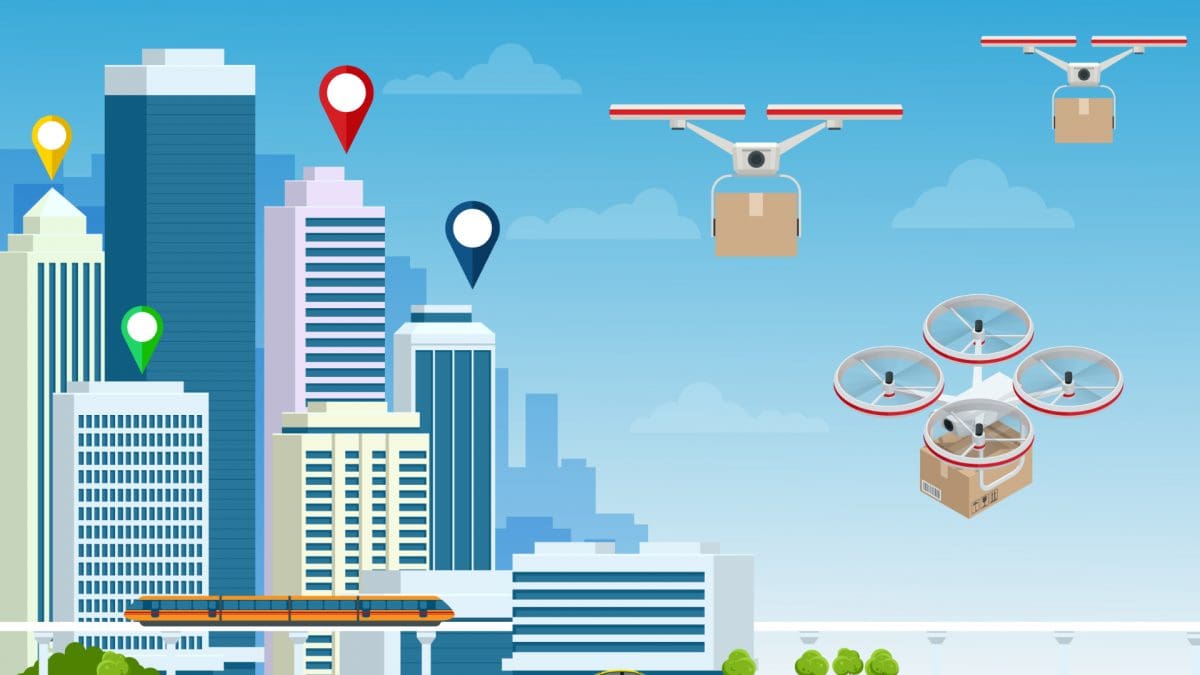
For customers, delivery time is an issue of concern. Online customers are willing to pay an extra buck for speedy deliveries. As a result, new technologies such as last mile delivery drones have been introduced to enhance delivery speeds. Many delivery companies are now opting for the skies to gain a competitive advantage over their rivals. The article discusses a brief history of delivery drones, their current position in the market, impact, and challenges facing their implementation.
Brief History of Last Mile Delivery Drones
Delivery drones are unmanned vehicles used to deliver packages, such as medical supplies, postal mail, or food, to specific locations. In recent years, food delivery companies have been the strongest advocates for incorporating drones into their delivery strategy. Although the are just recently being brought into a commercial space, they have been around since 1918 when they were used for military purposes. They gained popularity in 2013 when Amazon’s founder, Jeff Bezos, reintroduced the concept into the mainstream Air Prime in 2013.
Current Position of Delivery Drones & Players in the Market
Last mile drone delivery is rapidly booming and is seeing significant usage due to the growing eCommerce sector. Delivery drones are redefining the traditional logistics services and are being used to deliver parcels faster to remote and inaccessible places. Many logistic companies are incorporating the technology to improve consumer satisfaction and offer better services. Some of these early adopters of the technology include FedEx, Wing, DHL Parcelcopter, and Zipline.
Factors Hampering the Success of Delivery Drone Technology
Although delivery drones are autonomous, they face various challenges in their successful implementation. Some of the greatest obstacles include:
- Drone damage
- Client safety issues
- Landing challenges
In addition, a delivery drone is highly dependent on climatic conditions such as snow, rain, and wind, which significantly restricts delivery potential.
One final major roadblock to delivery drones feasibility was sky regulations. However, in 2020 the US Federal Aviation Administration introduced safety rules for delivery drones that will address some of the security and safety concerns of the utilization of the technology.
The Impact On Last Mile Logistics And Route Optimization
- Sustainability of Drone Deliveries: The total carbon emissions by road transport is estimated to be 74%, which could have catastrophic consequences on human life. According to research, drones save energy and reduce the carbon footprint for last mile logistics since they are electrically powered.
- Improved Delivery Times: The primary motivation that led to the introduction of the technology was to reduce delivery times. Companies looking into drone technologies have significantly eliminated road congestion. Delivery drones are known to be more efficient and convenient than delivery trucks. Not to mention, food deliveries are faster as they are not hampered by road traffic.
- Route Optimization: With the help of programmed routing software, like Elite EXTRA, the drones are guided along the fastest paths. Shorter and direct routes will be considered, thus saving a lot of time for last mile logistics.
In Conclusion
That said, delivery and logistics companies are now enjoying a seamless delivery process with the increasing growth of delivery drones. However, its implementation is yet to flourish once some of the obstacles facing the process are resolved. The future of parcel delivery is hugely dependent on technological advancements. In the future, self-autonomous cars like Tesla are more likely to be a game changer for eCommerce delivery.
Sources
https://www.mdpi.com/2071-1050/14/3/1766/htm
https://depts.washington.edu/sctlctr/news-events/in-the-news/amazon-drone-delivery-really-all-environmentally-friendly







